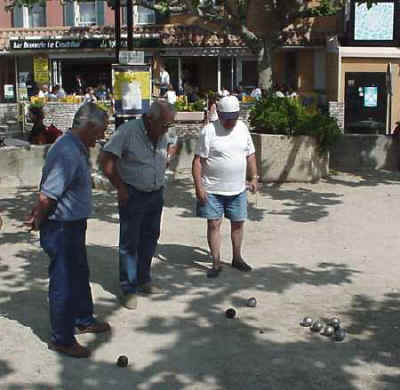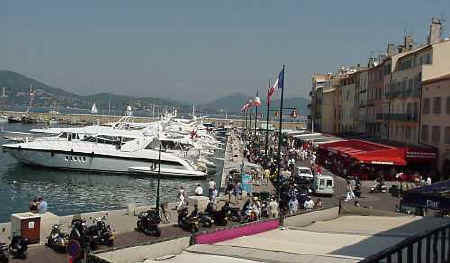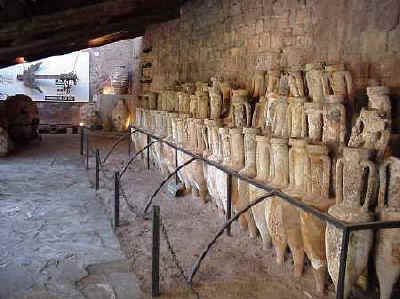 |
 |
 |
We sailed through the night from Minorca to the coast of France. Our landfall was in Cassis, a coastal town just east of Marseille. Cassis is too small for the map on the main page of this section, but you can see Marseille on the Mediterranean coast. Our trip along the French coast took us only from near Marseille to Nice, and then we crossed Monaco and the rest of France and arrived in Italy. Later, as we moved south, we visited Corsica, which is also part of France.
|
Cassis was a fine introduction for us to both France and to the region of Provence. The fishing boats in the small harbor are painted in the bright colors for which the region is famous. We drank the local dry white wine and were brave enough to buy Pastis, the anise-flavored aperitif. |
|
|
The game of boules is serious business in Provence. It's something like horseshoes. One player tosses a small ball to launch the game. Wherever the small ball lands is the target for that game (in the legal range, of course.) The team's shooter then tries to land these silver balls as close as possible to the target. The other team can toss its balls even closer to the target, or choose to use them as weapons to slam the other team's balls away. Eventually both teams use up their allotments of silver balls and the winner is decided. Boules appears to require intense concentration on the part of the players. There's a lot of posturing, too. The player about to shoot will walk ten feet or more to smooth out the sandy dirt where he expects his next shot to land and roll toward the target. There's a sign on this park in Cassis warning passers-by that "it is dangerous to cross". Sure, you could trip over a boules ball, but it's more likely you'd be assaulted by the player whose shot you ruined. |
 |
 |
St. Tropez was a quiet seaside town until a Brigitte Bardot movie in the 1950s made it famous. We were there during a holiday weekend at the end of May. There were no berths available for boats our size. We assumed that the reason is that they dedicate the harbor to dozens of 100'-plus yachts as you can see here. They devote the town's seawall to really big power boats. Luckily, there is a wonderful outer harbor and the winds were calm, so we could anchor outside. Swept Away was just about the smallest boat out there, too. There's more, in English, about St. Tropez at the Tourism Office (the site will open in a new window.) |
|
The produce, cheeses, olives and other delicacies in the open-air market in St. Tropez were arranged so beautifully that it is hard to resist buying them. These unusual tomatoes are called coeur de boeuf (heart of beef, like our beefsteak tomatoes) and are very meaty. If you so much as ask the produce man "what is that?", he'll hand you something to taste. Of course, he then expects you to buy some, and it's hard not to pass up the sweet local fruits and exotic vegetables. |
 |
 |
The archeological museum in Saint-Raphaël is located in the presbytery of a 12th century church and is filled with excavated objects, especially from the period from the first century BC to the first century AD. The amphorae in this photo were recovered from sunken ships in the area and were used to transport wine, oil, and other goods. The church itself, called the "Church of the Templar Knights", is continually under excavation. The digs have revealed remains of pre-Romanesque foundations, the church apparently having been built on top of a pagan temple. We walked endlessly to the top of the watch tower to be rewarded by a panoramic view of the town of Saint-Raphaël (this link will open a new window.) |